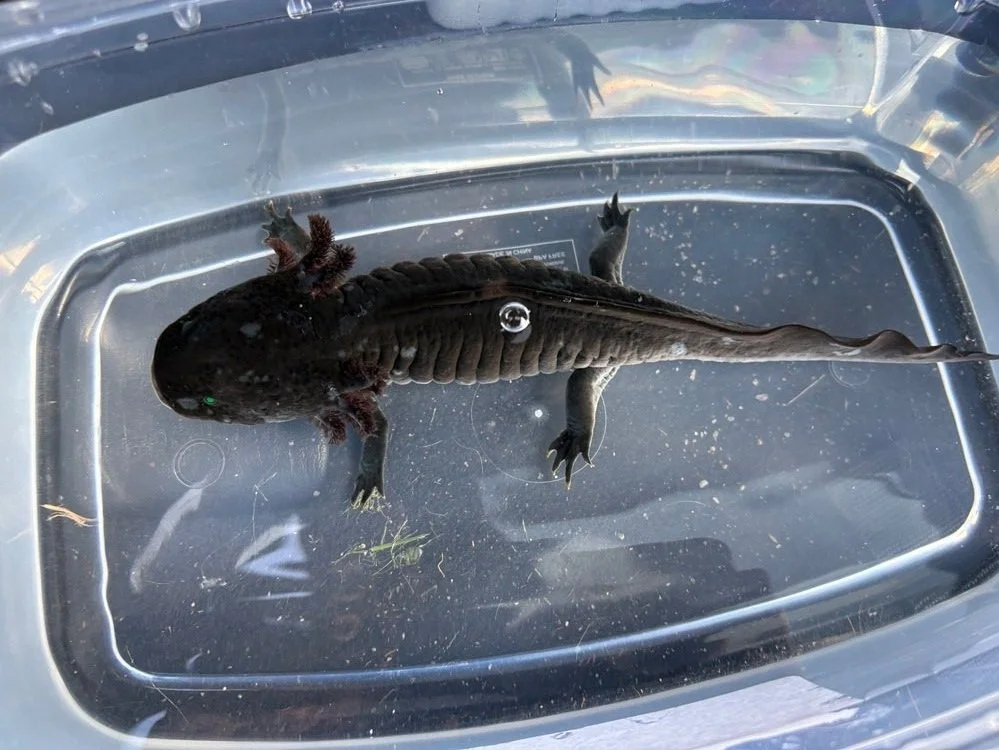#PROTIP: How to keep your cycle going while your axolotl is tubbed
There may be times when your axolotl will need to spend extended periods out of their tank (most commonly when they are tubbed for treating illness or during deworming). Without an axolotl to produce ammonia, the bacteria that make up the nitrogen cycle that keeps your tank healthy have nothing to “eat”.
This quick guide explains how to keep your cycle alive and processing while the axolotl is out of the tank.
A captive-bred axolotl being tubbed during an initial intake evaluation period at LLAR.
“Tubbing” refers to the practice of keeping an axolotl (or other amphibian or reptile) in a food-grade plastic container that is at least large enough for them to turn around in comfortably and performing daily or 12-hour 100% water changes. Tubbing is useful for treating diseases or injuries, conducting visual inspections, and maintaining your axolotl in a safe environment in the event that your tank is not cycled or your cycle crashes.
Now, how long are we talking?
If this is a scenario where the axolotl is going to be out of the tank for maybe a few days tops, leave everything as it is. No need to dose ammonia, just leave it be. The bacteria will be just fine for a few days without an ammonia source.
If this is a scenario where the axolotl is going to be out of the tank for a prolonged period of time, you’ll need to manually dose ammonia to keep the cycle sustained. Now don’t think about this as a cycling process; you’ve already got your established bacterial colonies and they are processing well. You wouldn’t need to test and build the amount they're able to process. This is just about keeping them alive and sustained. To do so, you’ll manually dose about 1 ppm of ammonia to the tank roughly every 3 days. This doesn’t have to be exact science, just a little something for the bacteria to munch on.
As you may recall, when processed ammonia is converted into nitrates. This means that depending on how long the axolotl was out of the tank, nitrates may have accumulated. A water change can be performed, lowering nitrates to below 20 (as close to 5 as you can get, the better), and then the axolotl can return to their tank (abiding temperature is also appropriate).
If ever in doubt that your nitrogen cycle is not fully established, you can and should repeat a 3-day test (in other words, 3 consecutive days of dosing ammonia in which the 24 hour test reads zero ammonia, zero nitrites, and at least the presence of nitrates; ppm may vary).
Questions? Reach out to our team on Facebook and ask us how to join our private Axolotl Help Facebook group!

